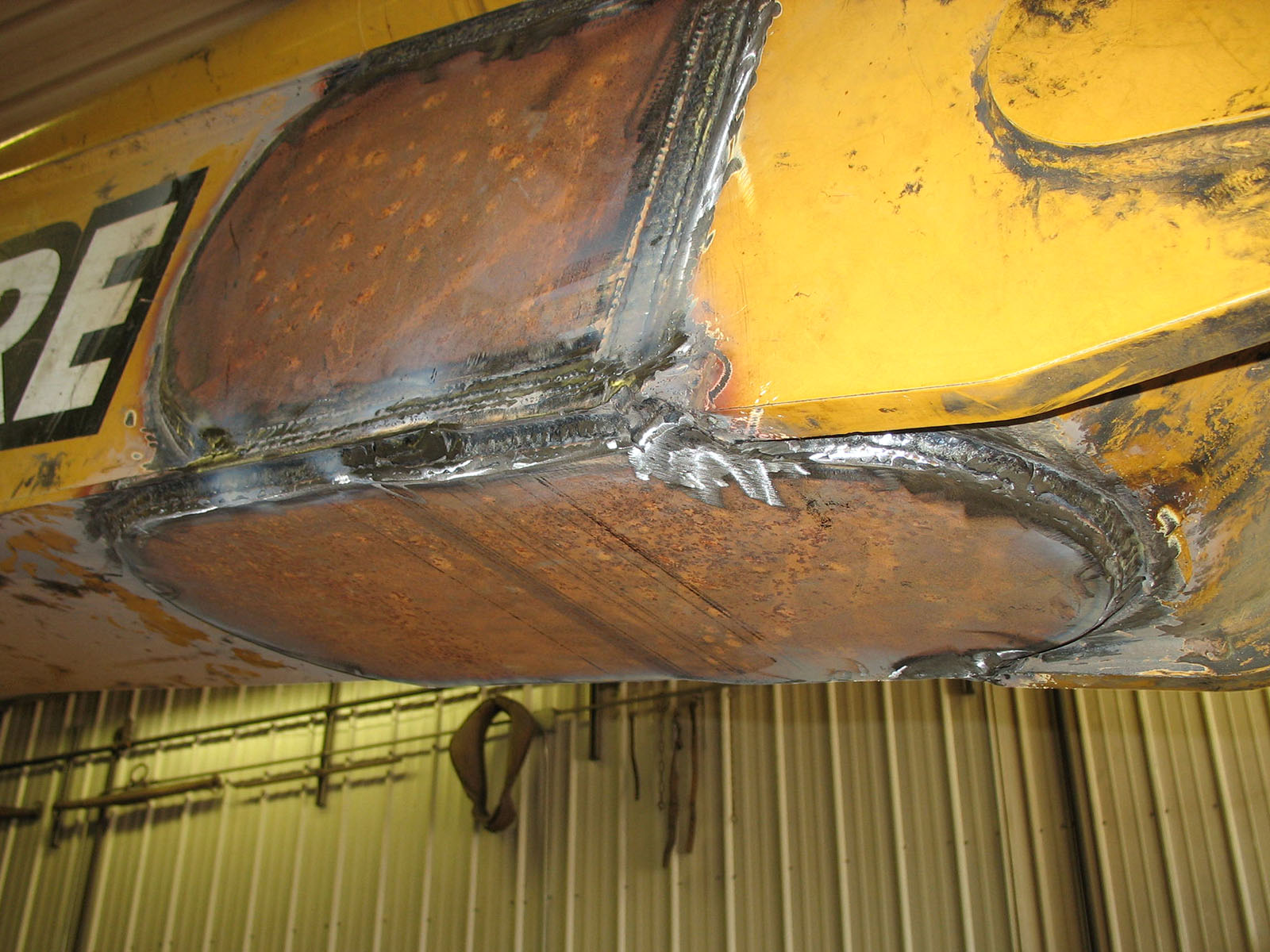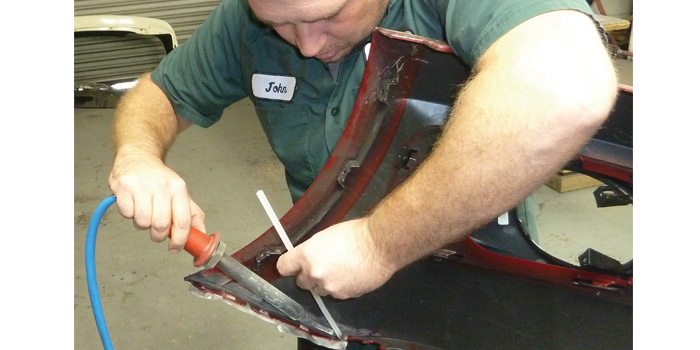Common Welding Repair Work Issues and Just How to Address Them Effectively
Welding repair services commonly run into a series of problems that can threaten the stability of the end product. Typical troubles include inadequate penetration, porosity, and misalignment, among others. Each defect provides unique challenges that require particular techniques for resolution. Understanding these problems is vital for welders intending to boost their abilities and outcomes. This conversation will certainly check out these usual welding repair service issues and effective methods to resolve them.
Inadequate Penetration
Insufficient infiltration happens when the weld steel falls short to totally fuse with the base product, leading to weak joints and potential structural failures. This issue typically stems from insufficient warm input, incorrect electrode angle, or improper welding speed. Welders may encounter poor infiltration as a result of a mistake of the required specifications for a specific product thickness or type. In addition, contamination on the base product's surface area can impede efficient bonding, intensifying the problem. To deal with inadequate infiltration, welders should guarantee proper settings on their equipment and keep a clean work surface area. Routine evaluation of welds is advised to recognize any type of deficiencies early, permitting timely adjustments and the avoidance of endangered architectural stability in bonded settings up.
Porosity
Porosity is an usual problem in welded joints that materializes as little gas bubbles trapped within the weld steel. This problem can endanger the integrity of the weld, resulting in minimized strength and prospective failure under anxiety. Fabrication. Porosity generally develops from contamination, dampness, or improper welding strategies, which allow gases to leave into the liquified weld swimming pool. To deal with porosity, welders should ensure appropriate surface prep work, keep a tidy working atmosphere, and utilize ideal welding parameters. Furthermore, picking the best filler product and shielding gas can minimize gas entrapment. Normal inspection and screening of welds can aid recognize porosity early, ensuring timely rehabilitative actions are taken, therefore maintaining the high quality and dependability of the welded framework
Misalignment
Misalignment in welding can occur from different factors, consisting of incorrect configuration and thermal growth. Comprehending the origin is vital for efficient resolution. Several modification techniques are available to straighten elements and guarantee architectural honesty.
Causes of Imbalance
Welding imbalance usually originates from a selection of underlying concerns that can compromise structural honesty. One primary cause is improper fit-up of components prior to welding, which can result in voids and unequal surface areas. Variations in thermal development throughout the welding process can additionally lead to distortion, particularly if the materials being joined have various coefficients of development. Additionally, poor securing and fixturing might fall short to hold elements safely in position, causing activity throughout welding. Inadequately kept equipment, consisting of welding devices and tools, might present inconsistencies in the weld bead, additional contributing to misalignment. Finally, operator error, stemming from not enough training or experience, can additionally play a significant duty in creating misaligned welds.
Adjustment Methods Readily Available
Resolving misalignment efficiently requires a mix of restorative strategies customized to the details issues available. One typical technique is using jigs or components to hold components in the correct placement throughout welding, guaranteeing constant positioning. In addition, pre-heating the materials can help in reducing distortion and improve fit-up. For significant misalignment, mechanical realignment methods, such as using hydraulic jacks or clamps, can be used to remedy the setting prior to welding. Post-weld heat treatment might likewise be essential to eliminate stresses triggered by imbalance. Careful inspection and modification throughout the configuration phase can avoid imbalance issues from becoming significant problems, advertising a smoother welding procedure and enhancing total architectural integrity.
Distortion
Distortion is a typical difficulty in welding that can develop from different factors, consisting of uneven cooling and heating. Recognizing the sources of distortion is necessary for executing efficient prevention techniques. Resolving this concern not just improves structural stability but additionally boosts the overall top quality of the weld.
Root causes of Distortion
When subjected to the extreme warmth of welding, products often undergo modifications that can cause distortion. This phenomenon mainly develops from thermal development and tightening during the welding procedure. As the weld location warms up, the material expands; upon air conditioning, it gets, which can create inner anxieties. In addition, unequal heating throughout a work surface can intensify these anxieties, resulting in bending or flexing. The kind of product likewise plays a considerable function; steels with differing thermal conductivity and coefficients of growth might respond differently, leading to unforeseeable distortions. Bad joint layout and poor fixturing can contribute to misalignment throughout welding, boosting the chance of distortion. Comprehending these causes is crucial for effective welding repair service and prevention techniques.
Prevention Techniques
Efficient avoidance methods for distortion during welding emphasis on managing warmth input and making certain correct joint layout. Keeping a regular warmth input assists to reduce thermal growth and contraction, which can cause distortion. Making use of strategies such as preheating the work surface can likewise reduce the temperature level slope, advertising uniform home heating. Additionally, picking suitable joint styles, such as T-joints or lap joints, can enhance security and lower tension concentrations. Carrying out proper fixturing to safeguard the workpieces in place better help in preserving placement throughout the welding process. Lastly, staggered welding series can disperse warm extra uniformly, preventing localized distortion. By applying volt welder these strategies, welders can greatly reduce the chance of distortion and boost the total quality of their welds.
Splitting
Breaking is an usual issue run into in welding repairs, often resulting from numerous aspects such as incorrect cooling rates, product option, or poor joint preparation. The occurrence of fractures can substantially jeopardize the honesty of the weld, leading to possible failings during operation. To resolve this problem, welders should initially examine the origin, guaranteeing that materials are suitable and appropriately picked for the specific application. Furthermore, regulating the air conditioning price throughout the welding process is necessary; fast air conditioning can cause tension and lead to fracturing. Correct joint layout and prep work likewise add to reducing the danger. Carrying out these approaches can boost weld quality and sturdiness, inevitably decreasing the likelihood of breaking in finished weldments.

Insufficient Fusion
A significant issue in welding repair work is incomplete combination, which takes place when the weld metal does not sufficiently bond with the base product or previous weld passes - Montana Mobile Welding and Repair Belgrade Welding. This defect can cause weak points in the joint, potentially compromising the honesty of the bonded structure. Factors contributing to incomplete fusion include not enough warmth input, inappropriate welding method, and contamination of the surface areas being joined. To resolve this issue efficiently, welders ought to assure proper pre-weld cleaning and surface preparation, as well as readjust their welding specifications to attain sufficient penetration and combination. Normal assessment throughout the welding procedure can likewise aid recognize incomplete combination early, enabling timely rehabilitative steps to boost the overall high quality of the weld
Overheating
While welding repairs can improve structural stability, overheating presents a significant challenge aluminum filler that can bring about material deterioration. Excessive heat during welding can change the mechanical residential properties of steels, causing minimized toughness, boosted brittleness, and bending. This sensation is specifically important in high-stress applications where structural reliability is extremely important. Determining getting too hot can involve aesthetic inspections for staining or distortion, in addition to keeping track of temperature level throughout the welding process. To mitigate the risks related to overheating, welders ought to use suitable techniques, such as managing warm input, readjusting travel speed, and using suitable filler materials. Furthermore, carrying out pre- and post-weld warm therapies can help bring back material residential properties and enhance the total high quality of the repair work, ensuring long-term performance and security.
Frequently Asked Inquiries
What Are the Common Indications of a Welding Defect?

Exactly How Can I Examine My Welds for Quality?
To evaluate welds for high quality, one can use visual evaluations, ultrasonic testing, and radiographic approaches. Each technique assures architectural honesty, determines flaws, and validates adherence to defined criteria, ultimately improving the reliability of the bonded joints.
What Safety and security Preventative Measures Should I Take While Welding?
When welding, one should prioritize safety by putting on proper individual protective tools, making sure correct air flow, safeguarding flammable products away, preserving a clean work space, and understanding environments to protect against injuries and crashes.
Can I Repair a Weld Without Redoing the Entire Joint?
Fixing a weld without renovating the entire joint is possible, relying on the damage (Belgrade Fabrication). Methods such as grinding, including filler material, or making use of a welding process can successfully resolve certain defects while protecting the bordering framework
What Devices Are Necessary for Reliable Welding Repairs?
Crucial tools for efficient welding fixings consist of a welding equipment, wire brush, grinder, protective gear, clamps, and filler materials. Each tool plays a vital duty in making certain Your Domain Name quality and safety during the repair work procedure. Porosity usually occurs from contamination, wetness, or incorrect welding techniques, which enable gases to leave into the liquified weld swimming pool. Improperly conserved tools, including welding makers and devices, might introduce disparities in the weld bead, additional adding to imbalance. When subjected to the extreme heat of welding, materials typically undergo modifications that can lead to distortion. Splitting is an usual concern encountered in welding fixings, often resulting from numerous aspects such as inappropriate air conditioning rates, material option, or inadequate joint preparation. A significant concern in welding repair services is insufficient blend, which occurs when the weld steel does not properly bond with the base product or previous weld passes.
Comments on “A quick guide about overheating prevention from Montana Mobile Welding and Repair”